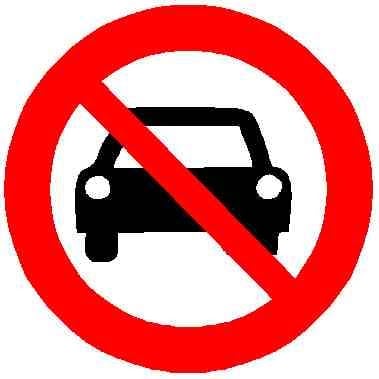If I drew a 3 mile circle around my house, I’d have to cross three numbered highways with no sidewalks or crosswalks to reach the edge in any direction. The US was built with cars in mind, and it fucking sucks.
Yeah, that’s the issue with a lot of car centric city, highway cutting across neighbourhoods which makes some 1km travel impossible because of the highway.
nO yOu DoNt UnDeRsTaNd AmErIcA iS rEaLlY big!
Is 2021 a good year to study? Not only is this during the pandemic, but it was early when people were still taking the pandemic seriously.
I’m not saying its a great year to study, but a lot of people had already moved on by 2021.
Fir anyone else curious: they used anonymous mobile device location data, so the only know distance traveled and time stayed. They don’t know which specific mode of transportation was used.
They can use speed to filter for walking / biking as well as if their path stays on the road
Not perfect, but a really good guestimate
Oh, they definitely could, but they didn’t for this study. The way they said they collected information for this one was more focused on “are people changing movement behavior during COVID” so they just looked at start and stop points, distance and dwell time, anonymized to the county level.
I share this study as regularly as it seems reasonable in spaces outside the realm of car free living. While I’ve had some nice exchanges with people that hadn’t given it thought, it does seem to be met with aggravation more often than not.
Primarily individuals making multiple trips a week more than a hundred kilometres and they don’t want to have to recharge every day. I’ve pointed out they would typically charge at home overnight, but then more edge cases chime in of course. If a person refueled their current car after every trip they made, it would be a quick resolve in opinion to the benefit of this study. That’s exactly what I did once upon a time and I downsized as soon as I could.
Perhaps understandably, it’s difficult to envision a different way of living for someone that has been unknowingly entrenched in anything, let alone something as dominating as cars are.
A trip was defined as a movement that includes a stay of longer than 10 minutes at a location away from home. Multiple stays of longer than 10 minutes before returning home were counted as multiple trips. The trips included driving, rail, transit, and air.
So you’re saying it included Taylor Swift’s jet flights to her bathroom? /s
Yes and each of her family members too.
It’s 3.3 miles to my nearest grocery store, and I consider that relatively close. 1 mile is 45 mph, 1 lane, no sidewalks. 2 miles is 45 mph (that people do 55mph), 2 lanes, no sidewalks. The .3 is neighborhood and parking lot.

